
VST.Epub.contentReady(window, document); VST.cfiBase='/4';
Language in Mind
An Introduction to Psycholinguistics
Second Edition

JULIE SEDIVY
University of Calgary

VST.Epub.contentReady(window, document); VST.cfiBase='/4';
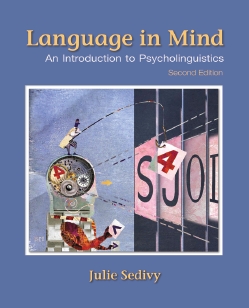
About the Cover and Chapter Opener Images
Bruno Mallart is one of the most talented European artists, his work having appeared in some of the worlds premier publications: The New York Times, The Wall Street Journal, and the New Scientist, to name a few. A freelance illustrator since 1986, Mallart first worked for several childrens book publishers and advertising agencies, using a classical realistic watercolor and ink style. Some years later he began working in a more imaginative way, inventing a mix of drawing, painting, and collage. His work speaks of a surrealistic and absurd world and engages the viewers imagination and sense of fun. Despite the recurring use of the brain in his art, Mallarts background is not scientificthough his parents were both neurobiologists. He uses the brain as a symbol for abstract concepts such as intelligence, thinking, feeling, ideas, and knowledge. Attracted to all that is mechanical, Mallarts art frequently includes machine parts such as gears and wheels that imply movement and rhythm. These features together, in their abstract representation, beautifully illustrate the topics discussed in Language in Mind, Second Edition. To see more of Bruno Mallarts art, please go to his website: www.brunomallart.com.
VST.Epub.contentReady(window, document); VST.cfiBase='/4';
Language in Mind, Second Edition
Oxford University Press is a department of the University of Oxford. It furthers the Universitys objective of excellence in research, scholarship, and education by publishing worldwide. Oxford is a registered trade mark of Oxford University Press in the UK and certain other countries.
Published in the United States of America by Oxford University Press
198 Madison Avenue, New York, NY 10016, United States of America
2020 Oxford University Press
Sinauer Associates is an imprint of Oxford University Press.
For titles covered by Section 112 of the US Higher Education Opportunity Act, please visit www.oup.com/us/he for the latest information about pricing and alternate formats.
All rights reserved. No part of this publication may be reproduced, stored in a retrieval system, or transmitted, in any form or by any means, without the prior permission in writing of Oxford University Press, or as expressly permitted by law, by license, or under terms agreed with the appropriate reproduction rights organization. Inquiries concerning reproduction outside the scope of the above should be sent to the Rights Department, Oxford University Press, at the address above.
You must not circulate this work in any other form and you must impose this same condition on any acquirer.
Address editorial correspondence to:
Sinauer Associates
23 Plumtree Road
Sunderland, MA 01375 USA
Address orders, sales, license, permissions, and translation inquiries to:
Oxford University Press USA
2001 Evans Road
Cary, NC 27513 USA
Orders: 1-800-445-9714
Library of Congress Cataloging-in-Publication Data
Names: Sedivy, Julie, author.
Title: Language in mind : an introduction to psycholinguistics / Julie
Sedivy, University of Calgary.
Description: Second edition. | New York : Oxford University Press, [2020] |
Includes bibliographical references and index.
Identifiers: LCCN 2018044934 | ISBN 9781605357058 (hardcover)| ISBN 9781605358369 (ebook)
Subjects: LCSH: Psycholinguistics. | Cognition.
Classification: LCC BF455 .S3134 2020 | DDC 401/.9--dc23
LC record available at https://lccn.loc.gov/2018044934
9 8 7 6 5 4 3 2 1
Printed in the United States of America
VST.Epub.contentReady(window, document); VST.cfiBase='/4';
For My Students
VST.Epub.contentReady(window, document); VST.cfiBase='/4';
Brief Contents
VST.Epub.contentReady(window, document); VST.cfiBase='/4';
Contents
VST.Epub.contentReady(window, document); VST.cfiBase='/4';
Preface
Note to Instructors
As psycholinguists, we get to study and teach some of the most riveting material in the scientific world. And as instructors, we want our students to appreciate what makes this material so absorbing, and what it can reveal about fundamental aspects of ourselves and how we interact with each other. That desire provided the impetus for this textbook.
As I see it, a textbook should be a starting pointan opening conversation that provokes curiosity, and a map for what to explore next. This book should be accessible to students with no prior background in linguistics or psycholinguistics. For some psychology students, it may accompany the only course about language theyll ever take. I hope theyll acquire an ability to be intelligently analytical about the linguistic waters in which they swim daily, an appreciation for some of the questions that preoccupy researchers, and enough background to follow significant new developments in the field. Some students will wind up exploring the literature at close range, perhaps even contributing to it. These students need an introductory textbook that lays out important debates, integrates insights from its various subdisciplines, and points to the many threads of research that have yet to be unraveled.
Throughout this book, Ive tried to encourage students to connect theories and findings to observations about everyday language. Ive been less concerned with giving students a detailed snapshot of the newest greatest hits in research than with providing a helpful conceptual framework. My goal has been to make it as easy as possible for students to read the primary literature on their own. Many students find it very difficult to transition from reading textbooks to digesting journal articles; the new Researchers at Work boxes are designed to help students by serving as a model for how to pull the key information out of a journal article. Ive tried to emphasize not just what psycholinguists know (or think they know), but how theyve come to know it. Experimental methods are described at length, and numerous figures and tables throughout the book lay out the procedural details, example stimuli, and results from some of the experiments discussed in the chapters. To help students actively synthesize the material, Ive added a new series of Questions to Contemplate after each section. These may prompt students to organize their thoughts and notes, and instructors can nudge students into this conceptual work by assigning some as take-home essay questions.
This edition continues to offer a mix of foundational and newer research. More examples of crosslinguistic research, including work with signed languages, have been included. Ive also put greater emphasis on language development over the lifespan, with more detailed discussions of the role of language experience and the effects of age on language. And Ive encouraged students to think about some current research controversies, such as the disputed connection between bilingualism and enhanced cognitive skills. Needless to say, there are many potential pages of material that I regretfully left out; my hope is that the book as a whole provides enough conceptual grounding that students can pursue additional topics while having a sense of the overall intellectual context into which they fit. Ive also tried to give students a balanced view of the diverging perspectives and opinions within the field (even though, naturally, I subscribe to my own favorite theories), and a realistic sense of the limits to our current knowledge.
Next page
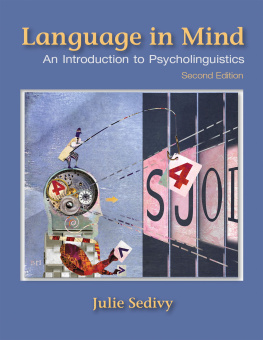

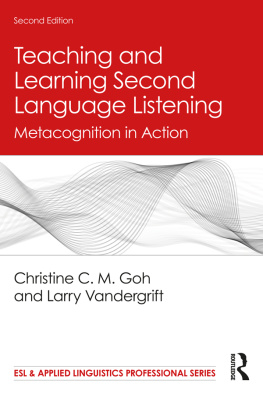
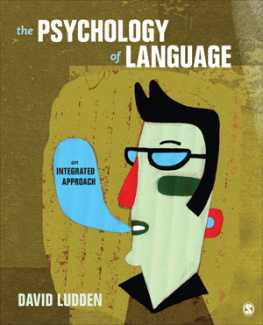
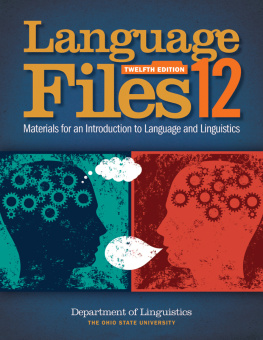
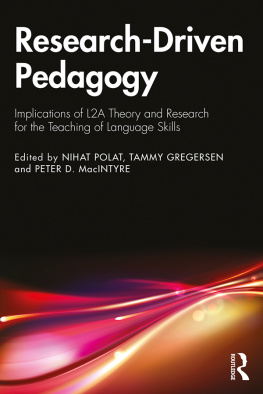
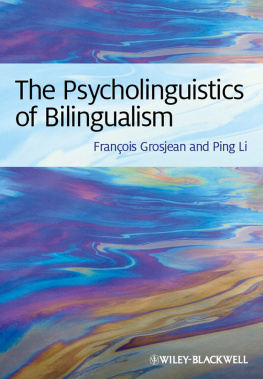

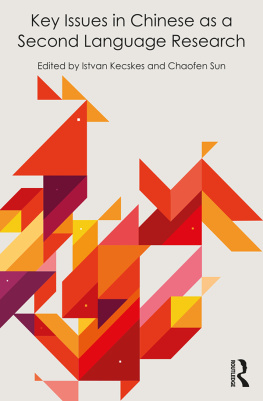

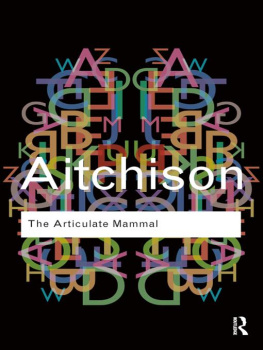
 VST.Epub.contentReady(window, document); VST.cfiBase='/4';
VST.Epub.contentReady(window, document); VST.cfiBase='/4'; 
 VST.Epub.contentReady(window, document); VST.cfiBase='/4';
VST.Epub.contentReady(window, document); VST.cfiBase='/4';